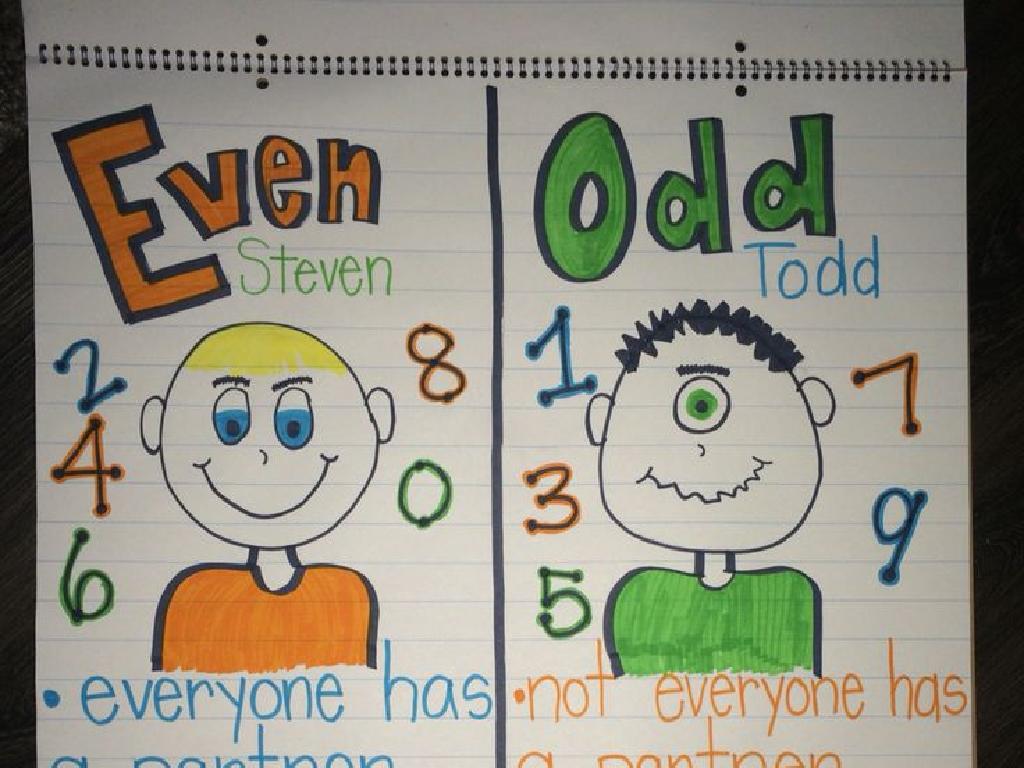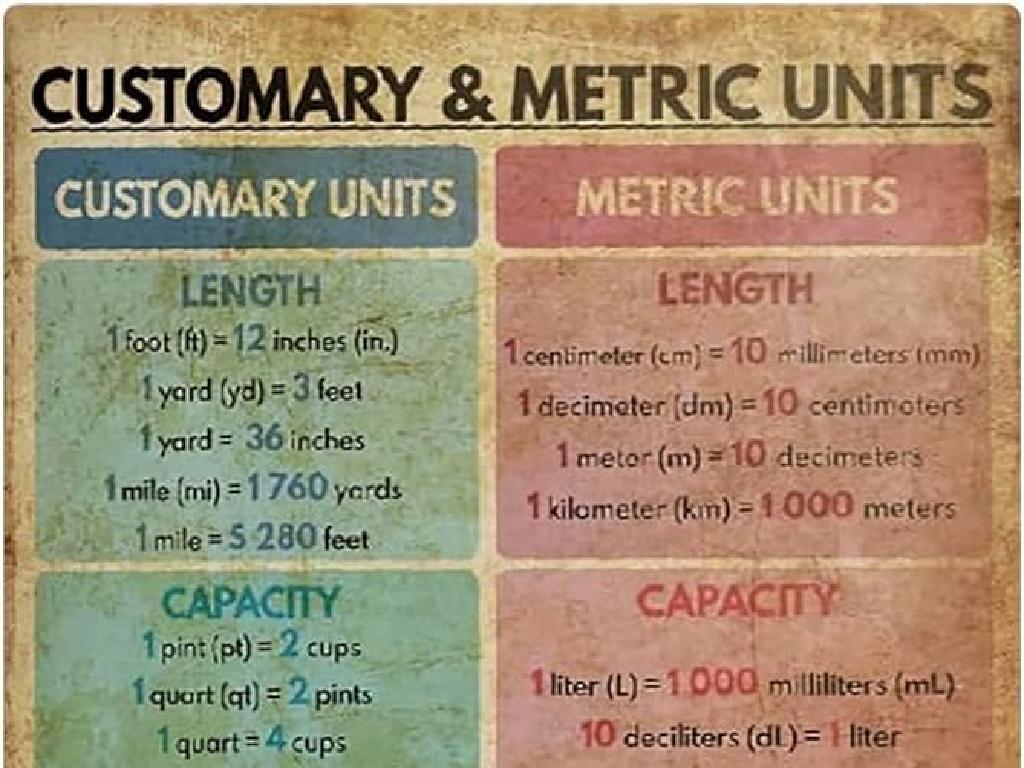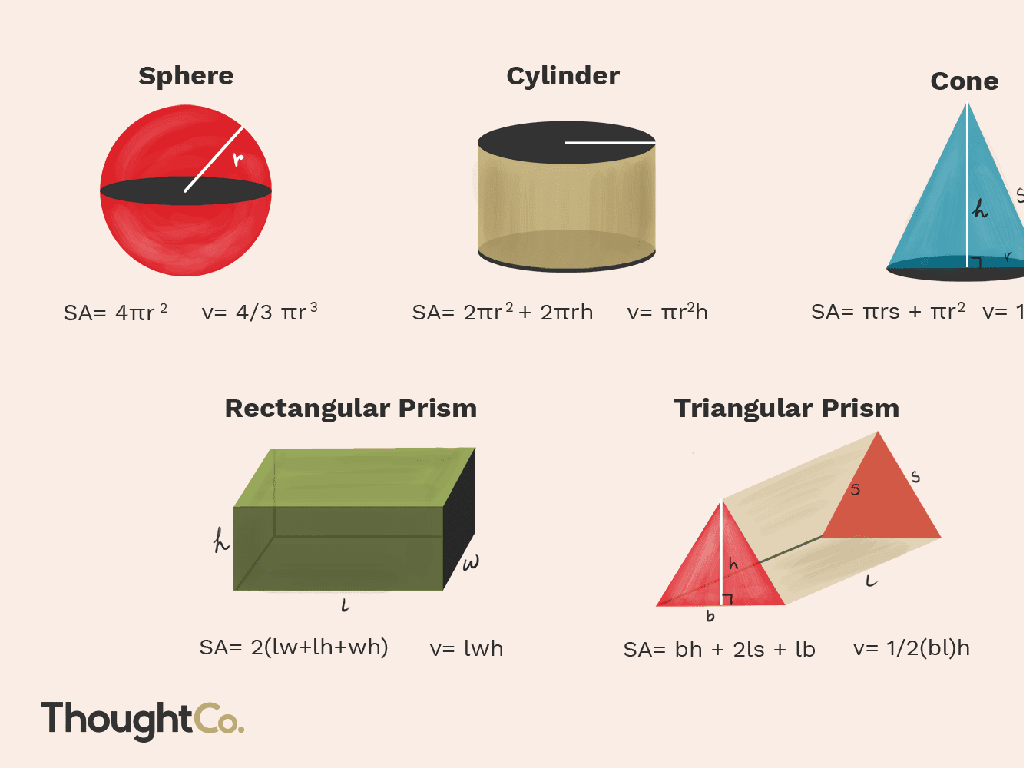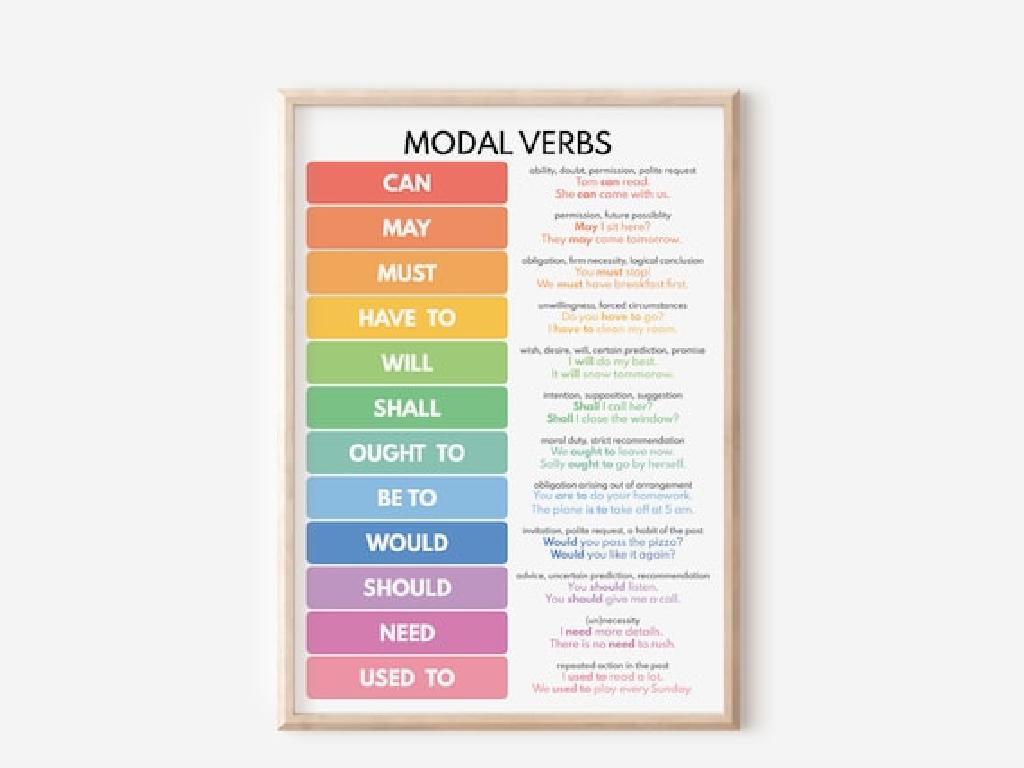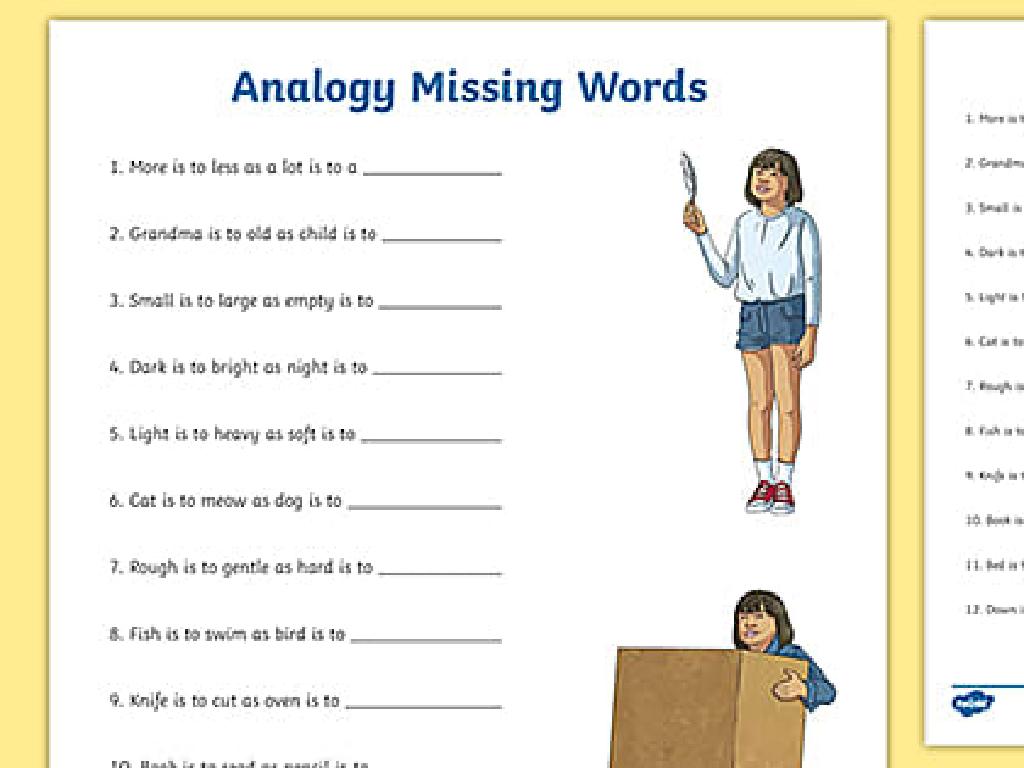Compare Stages Of An Animal'S Life Cycle
Subject: Science
Grade: Third grade
Topic: Animals
Please LOG IN to download the presentation. Access is available to registered users only.
View More Content
Introduction to Animal Life Cycles
– What is a Life Cycle?
A life cycle is the series of changes an animal goes through from birth to adulthood.
– Stages of Life Cycles
Most animals have stages like birth, growth, reproduction, and eventually death.
– Importance of Life Cycles
Learning about life cycles helps us understand how animals grow and change.
– Observing Life Cycles
We can watch butterflies or frogs to see their life cycle stages!
|
Begin the lesson by explaining the concept of a life cycle, emphasizing that it is a natural process that every living creature goes through. Highlight the key stages common to most animals, such as birth, growth, reproduction, and death. Discuss the importance of understanding life cycles in the context of science and the natural world, as it helps us comprehend the continuity of life and the role of each species in its ecosystem. Encourage students to think of examples and observe life cycles in their environment, such as a caterpillar transforming into a butterfly or a tadpole into a frog, to make the concept more tangible and engaging.
Exploring Life Cycles in Animals
– What is a Life Cycle?
– A series of stages from birth to death that an organism passes through
– Key Stages: Birth to Death
– Birth, growth, reproduction, and death are the main stages
– Each Animal’s Life Cycle is Unique
– For example, a butterfly’s life cycle is different from a frog’s
– Observing Life Cycle Stages
|
This slide introduces the concept of a life cycle, which is the sequence of stages an animal goes through from the beginning of its life to its death. It’s important to explain that while all animals have a life cycle, each species has a unique pattern. For instance, the life cycle of a butterfly includes stages like egg, caterpillar, pupa, and adult, which is different from a frog that goes through egg, tadpole, and adult stages. Encourage students to think about the life cycles of animals they are familiar with and how each stage is important for the survival of the species. This will set the foundation for understanding the diversity of life and the processes of growth and reproduction.
Life Cycle of a Butterfly
– Egg Stage: Start of life
– Tiny butterfly eggs on a leaf
– Caterpillar Stage: Growing up
– Caterpillar eats a lot to grow
– Pupa Stage: Changing form
– Caterpillar rests in a chrysalis
– Butterfly Stage: Full grown
– Butterfly lays eggs to start cycle
|
This slide introduces students to the four stages of a butterfly’s life cycle. Begin with the egg stage, explaining how a butterfly’s life starts as a tiny egg often found on leaves. Move on to the caterpillar stage, where students learn about the growth and development as the caterpillar eats leaves. The pupa stage is where the caterpillar forms a chrysalis and undergoes metamorphosis. Finally, discuss the butterfly stage, where the fully developed butterfly emerges to continue the cycle by laying eggs. Use this opportunity to discuss the concept of metamorphosis and how it is a common trait in the animal kingdom, emphasizing the transformation that occurs from one stage to the next. Encourage students to think about how each stage is crucial for the butterfly’s development and survival.
Life Cycle of a Frog
– Frogs begin as eggs in water
– Eggs are laid in clusters in water, often called spawn
– Tadpoles: Frogs’ aquatic life stage
– Tadpoles hatch from eggs, have gills and tails for swimming
– Froglets grow legs and lungs
– Froglets have tiny legs, lungs start to develop for land
– Adult frogs: The final stage
– Adult frogs live on land, can breathe air, and lay eggs
|
This slide introduces the life cycle of a frog, which is a great example to help third-grade students understand the concept of metamorphosis. Start with the egg stage, explaining how frogs lay eggs in water. Move on to the tadpole stage, where students learn about the aquatic lifestyle of young frogs and their gill-breathing system. The froglet stage is crucial as it represents the transition from water to land, showcasing the development of legs and lungs. Finally, discuss the adult frog stage, where frogs are fully developed, can breathe air, and are capable of laying eggs to continue the cycle. Encourage students to think about how this cycle compares to other animals and to human life stages.
Comparing Animal Life Cycles: Butterflies vs. Frogs
– Both undergo metamorphosis
– Metamorphosis is a change in form during an animal’s development.
– Stages of butterfly life cycle
– Egg, larva (caterpillar), pupa (chrysalis), and adult (butterfly).
– Stages of frog life cycle
– Egg, tadpole, tadpole with legs, froglet, and adult (frog).
– Significance of life cycle differences
– Differences in habitats and survival strategies lead to variations in life cycles.
|
This slide aims to compare the life cycles of butterflies and frogs, highlighting both similarities and differences. Both animals undergo metamorphosis, but the stages they go through are different. Butterflies start as eggs, then become caterpillars, pupate in a chrysalis, and finally emerge as adults. Frogs also start as eggs, then hatch into tadpoles, which gradually grow legs and transform into froglets before becoming adult frogs. Understanding these differences helps students grasp the concept of adaptation and survival in different environments. Encourage students to think about how each stage of the life cycle is suited to the animal’s habitat and lifestyle. This comparison can also lead to discussions on other animals’ life cycles and the diversity of life.
Life Cycles of Animals: Diversity in Nature
– Overview of animal life cycles
– Mammals: Birth to growth
– Mammals give live birth and nurse their young.
– Birds: Egg to flight
– Birds lay eggs, which hatch into chicks that later learn to fly.
– Fish: Spawn to swim
– Fish lay eggs or spawn; young fish are called fry.
|
This slide aims to introduce students to the concept that not all animals have the same life cycle stages. Start with a brief overview of what a life cycle is, then compare the life cycles of mammals, birds, and fish. Emphasize that mammals give birth to live young and take care of them, birds lay eggs and their young must learn to fly, and fish lay eggs in water and their young, known as fry, must quickly learn to fend for themselves. This comparison will help students appreciate the diversity of life and understand that different animals have adapted different strategies for reproduction and growth. Encourage students to think of examples of each type of animal and consider how their life cycles are suited to their environments.
Activity Time: Create Your Life Cycle
– Pick your favorite animal
– Draw the animal’s life stages
– Include stages like birth, growth, reproduction, and adult
– Label each stage clearly
– Use words like ‘egg’, ‘larva’, ‘pupa’, ‘adult’ for insects
– Get ready to present to the class
|
This activity is designed to help students understand the concept of life cycles by relating it to animals they are familiar with. Encourage them to choose an animal they like and are interested in learning more about. Provide guidance on how to draw and label the life cycle stages, ensuring they understand terms like ‘birth’, ‘growth’, ‘reproduction’, and ‘adult’. Offer examples such as a butterfly or frog to illustrate metamorphosis. Once they have completed their drawings, have each student present their work to the class, explaining each stage of the life cycle. This will reinforce their understanding and help them practice their presentation skills. Possible variations of the activity could include creating a life cycle poster, a 3D model, or even a short skit depicting the stages.
Life Cycle Recap & Importance
– Review animal life cycle stages
– Significance of each life stage
– Each stage is crucial for growth and development
– Open Q&A session
– Reflect on what we’ve learned
– Think about how each stage is important for survival
|
This slide aims to summarize the key points from our lesson on animal life cycles. Begin by recapping the stages, such as birth, growth, reproduction, and death. Emphasize the importance of each stage and how it contributes to the survival and continuation of a species. Allow students to ask any lingering questions they might have, fostering an environment of curiosity and understanding. Encourage them to reflect on the interconnectedness of each stage and how it relates to the overall health and longevity of animals. This reflection will help solidify their understanding of the life cycle concept.

